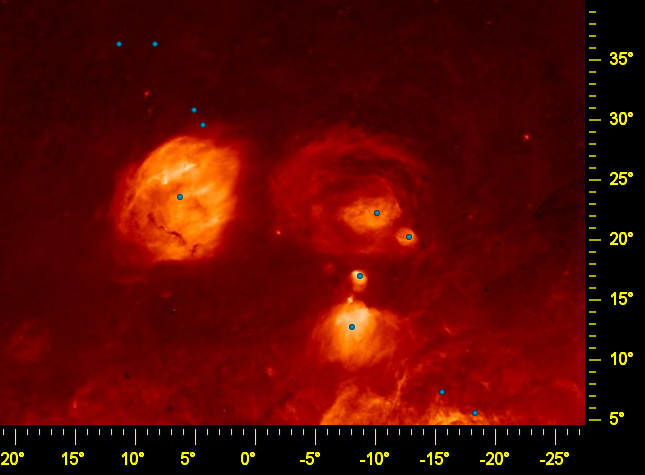
Hover your mouse over each blue dot for the name of the object, or click on the dot for a detail page. This map was created using the all-sky hydrogen-alpha map produced by Douglas Finkbeiner from data collected by the WHAM, VTSS and SHASSA hydrogen-alpha surveys.
Scorpius OB2 is the closest OB association to our solar system, and we may currently be travelling through partially ionised gas released from the stars of this association. Orion OB1 and Scorpius OB2 are the two major star formation regions in the Gould Belt, the local system of young hot stars. The Gould Belt is tilted at an angle of 15 degrees, which is fortunate for galactic explorers. The Gould Belt tilt means that Scorpius OB2 is well above the galactic plane and Orion OB1 well below. This clearly distinguishes local Gould Belt objects from those further away and means that local dust clouds in these two associations do not obscure more distant objects in the inner and outer galaxy.
Although the ancient Greeks knew nothing of the Gould Belt, the very prominent brilliant stars of Scorpius and Orion looked to them respectively like a scorpion's claws and a hunter. According to Greek mythology, it was a scorpion that killed Orion, and the gods placed both in the heavens, at opposite ends of the sky. And it is true that the two constellations are never together in the sky at once. In northern latitudes, Orion appears in the early evening in the winter, and Scorpius appears in the summer.
We are so close to Scorpius OB2 that we can see the HII regions surrounding individual O and hot B stars. Such HII regions are called Strömgren spheres. In the image you can see the Strömgren spheres for the stars Delta, Sigma, Pi, and Tau Scorpii and for Zeta Ophiuchi.
